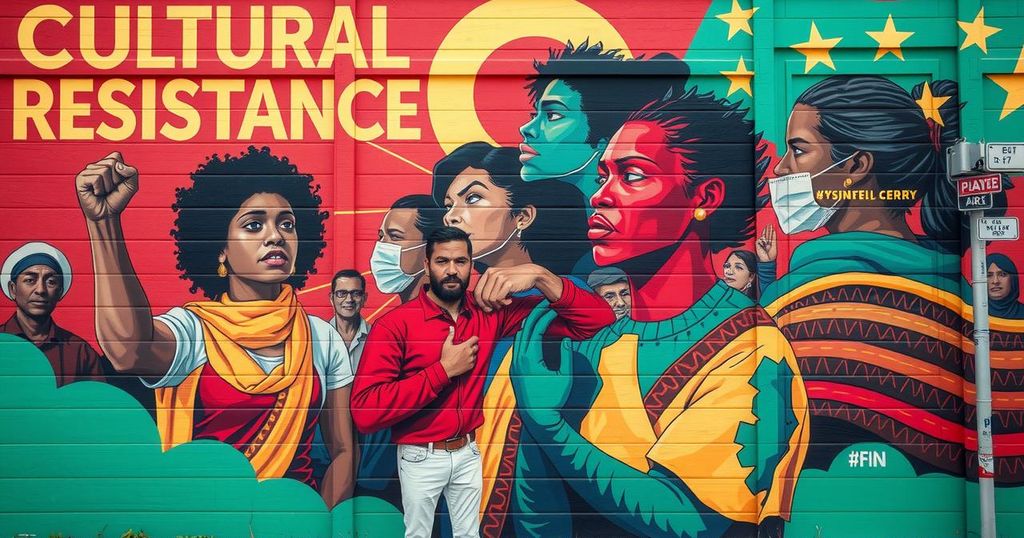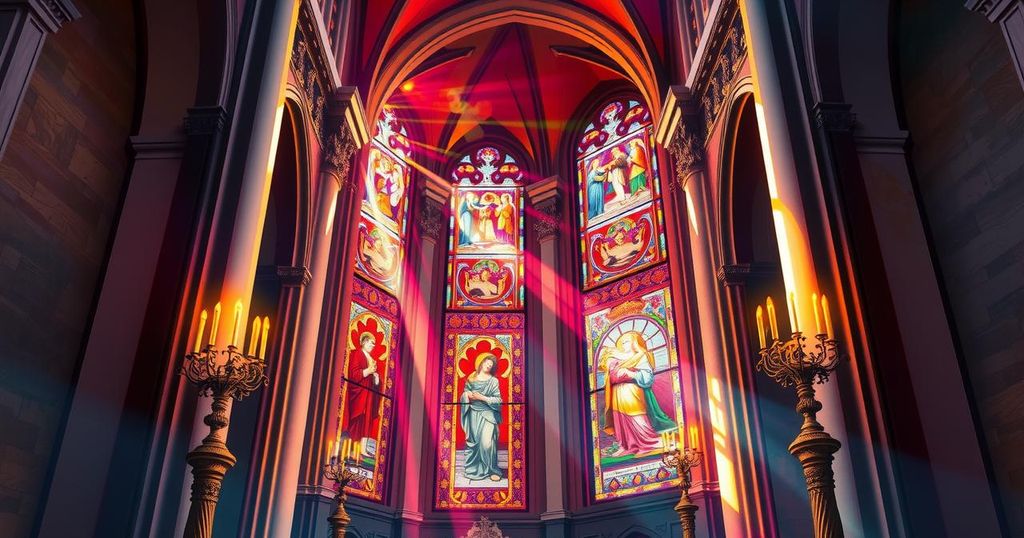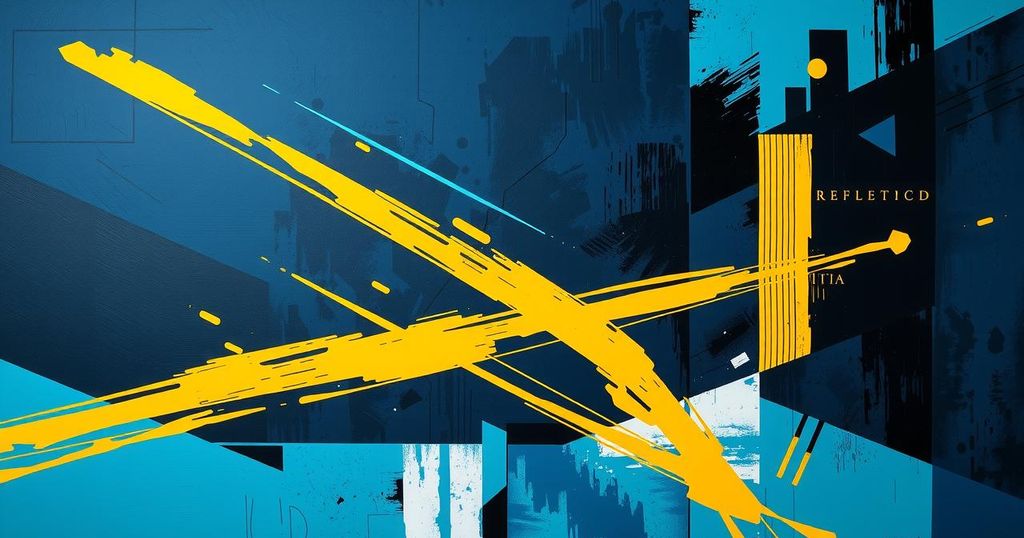The article discusses the impactful murals from Chile’s Popular Unity government and insights from prominent muralist Alejandro ‘Mono’ Gonzalez. It explores the cultural and political significance of these artworks, their international legacy, and the ongoing role of art in political resistance, amid historical challenges faced by Chilean artists.
The murals of Chile during the Popular Unity government have faced repression but have left a lasting legacy worldwide. This article discusses their political significance and features insights from Alejandro ‘Mono’ Gonzalez, a renowned muralist.
On a hot summer day at the National Library of Chile in Santiago, Mono, just two days shy of his seventy-eighth birthday, shared thoughts about an exhibition dedicated to Chilean painter José Venturelli. Venturelli, a longtime communist, rose to prominence under the influence of Mexican muralist David Alfaro Siqueiros and contributed significantly to international art through his work with the World Peace Council.
The creative atmosphere of the 1960s in Latin America gave rise to influential figures in music and literature, such as Atahualpa Yupanqui and Julio Cortázar. The Cuban Revolution sparked a new tradition in graphic arts, influencing visual culture significantly. Political street art movements in the U.S. also inspired Chile’s artistic community during this time.
1968 marked a pivotal year as global unrest erupted, notably with the student massacre in Mexico. In response to the increasing government repression, student-led brigades were organized, producing pamphlets, banners, and art to rally support for their cause. Mono remarked on the significance of these grassroots movements and their unique expression through murals.
In a significant political event, the Popular Unity coalition won the elections in 1970, advocating for extensive reforms to address economic and social issues in Chile. Their vision included nationalizing copper and promoting cultural initiatives like the Museo de la Solidaridad, a project aimed at collecting artworks for the Chilean populace. Murals became vital in communicating the government’s messages.
Unfortunately, the coup on September 11, 1973, led by General Augusto Pinochet, ended Allende’s presidency and led to the suppression of leftist art and literature. Efforts were made to destroy Marxist artworks, including those featured in the Museum of Solidarity. Nonetheless, cultural workers revived these initiatives abroad from 1975 to 1990, preserving intact the spirit of resistance and later restoring the museum post-1991.
Despite attempts to erase Chilean culture, the aesthetic of Chilean murals spread internationally through exiles who carried their artistic legacy worldwide. Artists like Malangatana Ngwenya incorporated Chilean influences into their works in Mozambique. Mono noted the difficulty in documenting the full extent of this international artistic exchange.
With more than fifty years since the coup, Mono continues to contribute to the artistic community, focusing more on poster design due to practicality. His recent projects include a poster for International Women’s Day, emphasizing the power of art as a tool for political education.
Mono is dedicated to nurturing aspiring artists through free workshops and believes that art must serve the people, addressing contemporary struggles whether in Chile or abroad. His commitment to using art for societal change reflects a steadfast belief in its ongoing capacity for cultural resistance.
In unrelated news, Utopix recently participated in the thirty-third Havana Book Fair in Cuba, showcasing poster exhibitions featuring contributions from the Tricontinental Art Department. They also introduced the Red Books Day 2025 Calendar. Featured this month is a tribute to Palestinian poet Mahmoud Darwish, whose legacy resonates with themes of love, creativity, and resistance.
The murals from the Popular Unity era in Chile not only exemplify a rich cultural legacy but also demonstrate art’s potent role in political discourse. Despite oppressive regimes, artists like Alejandro ‘Mono’ Gonzalez have continued to innovate and inspire, ensuring that cultural resistance remains prevalent. Art transcends borders, and the influence of Chilean muralism continues to resonate globally, emphasizing the importance of political expression in any era. Furthermore, the article underscores the significance of preserving historical memory and the necessity for ongoing efforts to utilize art for societal change.
Original Source: thetricontinental.org




